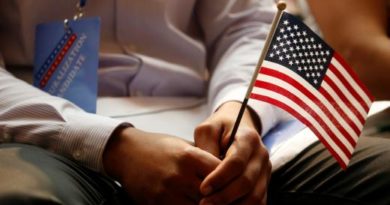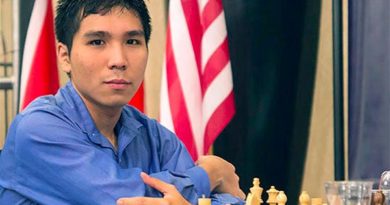OP-ED COLUMN: OPINION ON PAGE ONE – ‘Are we all being played here?’ By Francisco Tatad
AFTER Cory Aquino became president in 1986, one of the first things she did was to seek out Nur Misuari, founding chairman of the Moro National Liberation Front. Through the Tripoli Agreement brokered by Moammar Gadhafi in Libya in 1976, which provided for Muslim autonomy in Mindanao, the MNLF and the Philippine government had been conducting peace talks, but these collapsed for various reasons, leading to a resumption of violence.
When Marcos fell from power, the sun had already begun to set on the MNLF, and Misuari had been forced into self-exile in Damascus. But on her own initiative, Cory sent Local Government Secretary Aquilino Pimentel Jr. and her brother-in-law, the late Agapito “Butz” Aquino, to the Middle East to escort her late husband’s old friend back to Sulu. Once back, Misuari set his own terms, and Cory had to come to Jolo to talk to Misuari. Misuari’s troops even tried to frisk Defense Secretary Juan Ponce Enrile before letting him join Cory.
Some photos taken of that September 5, 1986 meeting showed Misuari like an emir receiving tribute from his subjects, or at the very least receiving an equal inside his royal tent. These were, MNLF sources have revealed, circulated among the leaders of the Organization of Islamic Conference (OIC), and Misuari’s political standing among them instantly shot up to the level of head of state. A few days after this meeting, I asked Cory, prior to an interview on her September 17, 1986 state visit to the United States, what prompted her to set aside protocol and all security precautions and meet with Misuari in his own tent. She said she did not have to think much about it.
“Will not every other dissident leader now want to surrender to you in their own hideout?” I asked.
“I will have to decide on a case to case basis,” she said.
Peace with the MNLF
This did not establish peace with the MNLF. In 1987, the new Constitution mandated the creation of autonomous regions in Muslim Mindanao and in the Cordilleras, pursuant to the 1976 Tripoli Agreement, which Marcos had tried to implement without satisfying the MNLF and other Muslim leaders. That same year, Cory and the MNLF signed the Jeddah Accord in Saudi Arabia, agreeing to continue further discussions on the expansion of the two autonomous regions created by Marcos. But the discussions failed and hostilities resumed.
In 1989, Congress passed Republic Act 6734 authorizing the creation of the Autonomous Region in Muslim Mindanao (ARMM). However, out of the 13 provinces and nine cities proposed to be part of ARMM, only Lanao del Sur, Maguindanao, Sulu and Tawi-tawi opted to become part of it, during the plebiscite. This much reduced ARMM was formally established on November 6, 1990. In protest, Hashim Salamat broke away from the MNLF, and formed the Moro Islamic Liberation Front, advocating an “independent” Moro Islamic state.
In 1996, a final peace agreement was signed in Jakarta between the Philippine government and the MNLF. Misuari became governor of ARMM, but the MILF had now become the new Moro insurgent force to contend with. Under President Fidel V. Ramos, who succeeded Cory in 1992, the government tried to pursue negotiations with the MILF. But one year after Joseph Estrada took over from Ramos in 1998, he declared an “all-out war” on the MILF, after turning down a formal request from US President Bill Clinton, handcarried to Malacañang by US Defense Secretary William Cohen, to postpone his offensive.
Camp Abubakar
The military captured the MILF’s main base at Camp Abubakar, but this did not end the war. It ended Estrada’s presidency instead. Estrada was ousted in January 2001, after a botched impeachment trial, and replaced by his vice president, Gloria Macapagal Arroyo, who reversed the “all-out war” policy and resumed peace negotiations.
On March 31, 2001, Congress amended the Organic Act of ARMM to include the provinces of Basilan, North Cotabato, Davao del Sur, Lanao del Norte, Palawan, Sarangani, South Cotabato, Sultan Kudarat, Zamboanga del Norte, Zamboanga del Sur, Zamboanga Sibugay, and the cities of Cotabato, Dapitan, Dipolog, General Santos, Iligan, Marawi, Koronadal, Tacurong and Kidapawan.
But only Marawi and Basilan (minus Isabela City) voted in favor of inclusion during the plebiscite.
Peace threatened to revive, but it was soon broken after the military attacked the MILF forces in Basilan for allegedly supporting the violent activities of the Abu Sayyaf. By October that year, the MNLF and MILF began having “unity talks.” In November, Misuari, who had earlier lost the MNLF chairmanship and the ARMM governorship, was accused of leading a rebellion in Zamboanga and Sulu. About a hundred were reported killed, and Misuari escaped to Sabah, where he was subsequently arrested by Malaysian authorities and deported to the Philippines.
GMA’s MOA-AD
In 2002, the Arroyo government and the MILF agreed to cooperate in going after the notorious kidnap-for-ransom gangs in Mindanao. On July 27, 2008 a Memorandum of Agreement on Muslim Ancestral Domain (MOA-AD) was finalized between the Arroyo government and the MILF in Malaysia, and was about to be signed in Kuala Lumpur when the Supreme Court, upon petition by some North Cotabato officials, struck it down.
In 2010, then President B. S. Aquino 3rd met with Al Haj Murad Ebrahim in Tokyo to rekindle the peace efforts. Murad had succeeded Hashim Salamat as MILF chair upon the latter’s death.
In October 2012, the government announced a Framework Agreement on the Bangsamoro (FAB) juridical entity. This was followed by the Comprehensive Agreement on Bangsamoro (CAB) in 2014. In between, on September 9, 2013, an MNLF faction headed by Ustadz Habier Malik proclaimed the independence of the Bangsamoro Republik in Zamboanga City, triggering a siege of several days. More than 10,000 homes were burned to the ground, over 100,000 people displaced and scores were killed and injured. Misuari denied any involvement in the siege. Habier Malik managed to escape.
Under the CAB and FAB the government agreed to pass a Bangsamoro Basic Law, creating a new juridical entity to replace ARMM. Serious constitutional concerns, however, quickly stalled its passage through the legislative mill. Petitions questioning the constitutionality of the CAB and the FAB have been filed before the Supreme Court. Thus, Aquino ended his term in 2016 without achieving his declared aim for the Muslims.
Ending two insurgencies
When DU30 assumed the presidency, he promised to fast-track the passage of the BBL. At the same time, he announced his strong desire to end the CPP/NPA insurgency, the world’s longest lingering insurgency. In 1972, Marcos proclaimed martial law throughout the country precisely to crush the insurgency. He jailed its top leaders and drove its members underground. After Marcos fell in 1986, Cory Aquino released the jailed leaders, and they immediately sought political sanctuary in Utrecht where they continued to lead the armed struggle at home, even after the Soviet Union, leader of the world communist bloc, had disintegrated at the end of the Cold War.
In 1992, Congress repealed the Anti-Subversion Act to allow the communists to give up armed struggle and enter the political mainstream, as was happening everywhere else. This allowed many of them to enter Congress as party-list representatives, where they now sit, but the killing of government troops and local officials by the NPA and the imposition of “revolutionary taxes” on businesses continued, as though nothing had changed.
DU30 has proclaimed the CPP/NPA a “terrorist group,” but there is little sign that the masses, or even the elite, consider them a serious national security threat. On every anniversary of Marcos’ proclamation of martial law, young boys and girls from exclusive schools are trotted out into the streets by raving fanatics to denounce the ghost of martial law but never the communist plague that provoked the proclamation of martial law, and which everyone everywhere else has kept in check.
From the very start of his presidency, DU30 showed his preferential option for the communists by appointing central committee members of the CPP to the Cabinet, without the benefit of a peace agreement with the CPP/NPA or their political arm, the National Democratic Front, which appears to claim DU30 himself as a council member. DU30’s most powerful Cabinet official is NDF vice chairman, or to put it another way, the NDF vice chairman is his most powerful Cabinet official, Cabinet Secretary Leoncio Evasco Jr., who runs the operations of the Office of the President, and 18 or so agencies that daily interface with the public.
NDF I and NDF II
One of his first acts as president was to order the resumption of the “on-again, and off-again” peace talks in Oslo, without any clear indication of how to pursue the necessary disarmament, demobilization and reintegration of CPP/NPA forces, according to the formula universally adopted in all UN-recognized peace talks. Before long, some critics and analysts began to refer to the Oslo peace talks as negotiations between “NDF-I” and “NDF-II.”
While these negotiations were ongoing, a special group in the CPP/NPA, known as the Moro Army Committee (MAC), was reported to be arming and funding Muslim extremist groups, with weapons and funds reportedly coming from North Korea, in order to strengthen the Moro extremist push in Mindanao.
To avert further suspicions about the NDF-I and NDF-II song and dance, DU30 issued a proclamation terminating the peace talks on November 23, 2017. He cited the NPA’s continued “atrocities” in the countryside as the reason for his proclamation. He also proclaimed the CPP/NPA as “terrorist organizations.” Many analysts believe DU30’s primary, if not sole audience, for these proclamations was the military. He wanted to convince the military he was determined to crush the CPP/NPA in order to gain their full support. But not everyone seems convinced. “We are being played,” said one retired officer, who cannot now be named.
Royal welcome for Joma?
Then on April 4, 2018, DU30 announced the resumption of the NDF-I and NDF-II negotiations to give peace “one final chance.” And Joma Sison has shown great alacrity about the prospect of coming home. Will DU30 welcome his old former professor in Manila the way Cory welcomed Misuari in Jolo in 1986? But first of all, will he now revoke his proclamation classifying the CPP/NPA as a “terrorist organization”? And will the Department of Justice now withdraw its petition before the Manila Regional Trial Court to classify the CPP/NPA as a “terrorist organization?”
Having given the peace talks a 60-day deadline, will DU30 now dictate the terms of the negotiations, or will he negotiate directly with Sison? If it took various parties elsewhere many years to discuss and agree on the disarmament, demobilization and reintegration of rebel forces preparatory to a final peace agreement, does DU30 think NDF-I and NDF-II can finish these serious and difficult issues in just two months? Or is a coalition agreement with the CPP/NPA/NDF a fait accompli, to be imposed on the Filipino nation and the Filipino people, without having to resolve these issues at all?
Shouldn’t we all be asking the same question our perplexed retired military official is asking: What’s DU30’s real game? Aren’t we all being played here?
All photographs, news, editorials, opinions, information, data, others have been taken from the Internet ..aseanews.net | [email protected] |.For comments, Email to :D’Equalizer | [email protected] | Contributor.










